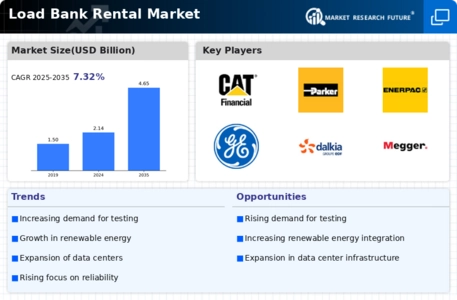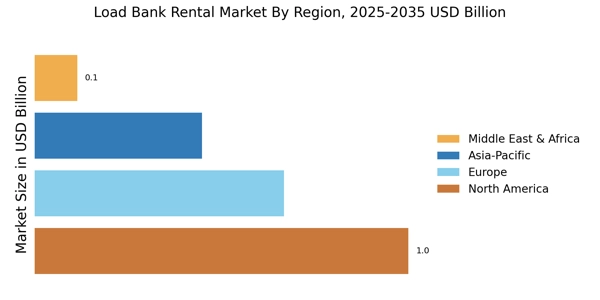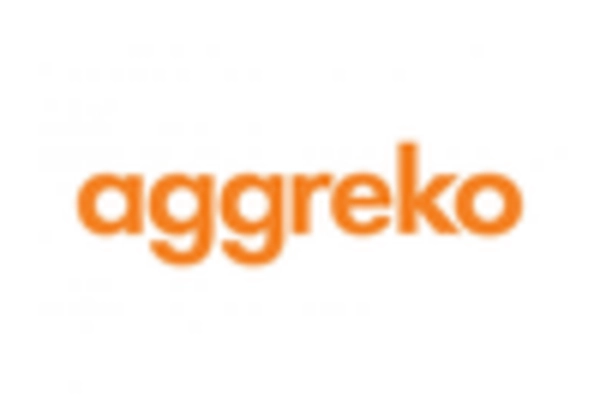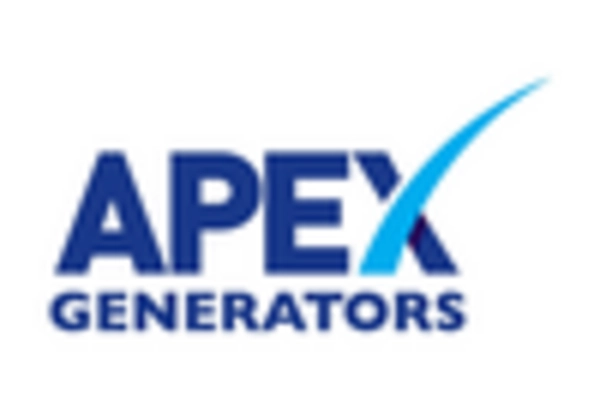Emergence of Hybrid Power Systems
The Load Bank Rental Market is adapting to the emergence of hybrid power systems that combine traditional and renewable energy sources. These systems require rigorous testing to ensure they operate efficiently under varying load conditions. Load banks play a crucial role in this testing process, allowing operators to simulate different scenarios and optimize performance. The hybrid power market is anticipated to grow at a rate of 7% per year, which could lead to increased demand for load bank rentals. This trend suggests that as hybrid systems become more prevalent, the load bank rental market will likely expand to meet the testing needs of these innovative power solutions.
Rising Infrastructure Development
The Load Bank Rental Market is experiencing a surge in demand due to the ongoing infrastructure development projects across various sectors. Governments and private entities are investing heavily in construction, transportation, and energy projects, which require reliable power sources for testing and commissioning. Load banks are essential for ensuring that generators and other power systems function optimally before they are deployed. According to recent data, the construction sector alone is projected to grow at a compound annual growth rate of 4.5% over the next five years, further driving the need for load bank rentals. This trend indicates a robust market for load bank rentals as companies seek to mitigate risks associated with power failures during critical phases of infrastructure projects.
Adoption of Renewable Energy Sources
The Load Bank Rental Market is witnessing a shift as more companies adopt renewable energy sources. As the integration of solar and wind energy increases, the need for load banks to test and balance these energy systems becomes essential. Load banks help in assessing the performance of renewable energy systems under various load conditions, ensuring they meet regulatory standards. The renewable energy sector is projected to grow by 8% annually, indicating a rising demand for load bank rentals to support this transition. This growth not only enhances the load bank rental market but also aligns with global sustainability goals, making it a pivotal driver in the industry.
Increased Focus on Data Center Reliability
The Load Bank Rental Market is significantly influenced by the growing demand for data centers, which require uninterrupted power supply to maintain operations. As businesses increasingly rely on digital infrastructure, the need for load testing to ensure reliability becomes paramount. Load banks are utilized to simulate the operational load of data center generators, ensuring they can handle peak demands. The data center market is expected to expand at a rate of 6% annually, which suggests a corresponding increase in the demand for load bank rentals. This trend highlights the critical role of load banks in maintaining the operational integrity of data centers, thereby propelling the load bank rental market forward.
Regulatory Compliance and Safety Standards
The Load Bank Rental Market is significantly impacted by the increasing regulatory compliance and safety standards imposed on power generation and distribution. Companies are required to conduct regular testing of their power systems to ensure they meet safety and operational standards. Load banks are essential tools for these tests, providing a controlled environment to assess generator performance. As regulations become more stringent, the demand for load bank rentals is expected to rise. The market for compliance-related services is projected to grow by 5% annually, indicating a strong correlation between regulatory requirements and the load bank rental market. This driver underscores the importance of load banks in maintaining compliance and ensuring safety in power operations.


















Leave a Comment